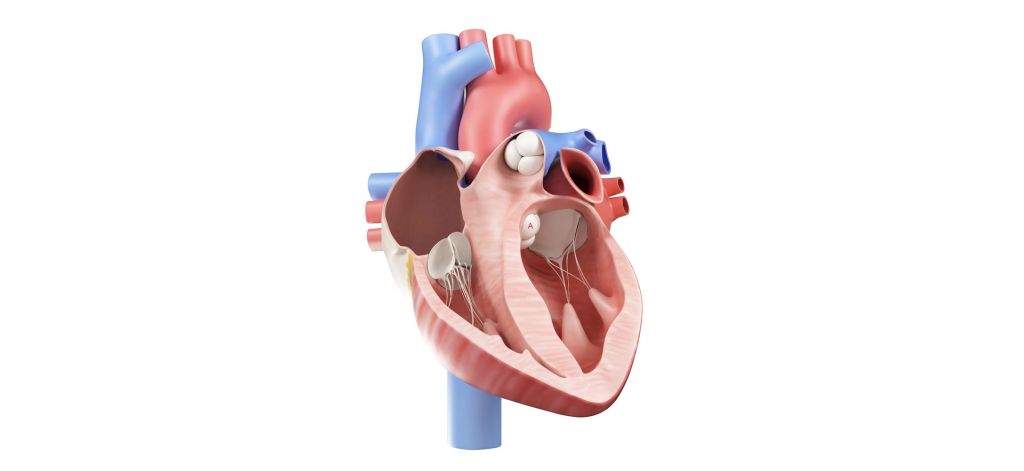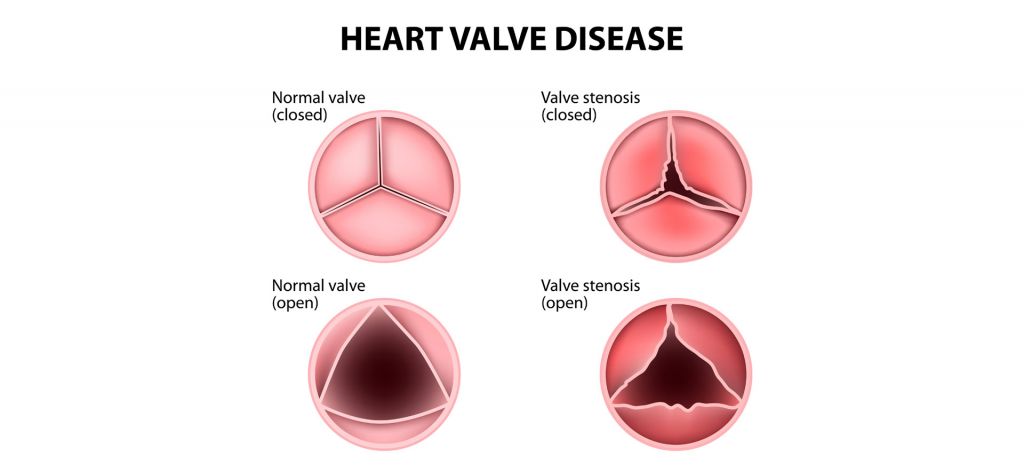DIAGNOSES-OPERATIONS
AORTIC VALVE STENOSIS
The revolution in heart valve operations has come from the advent of the Heart Team, a group of specialized physicians dealing with all aspects of the heart – cardiac surgeons, interventional cardiologists, echocardiographers, cardiac anesthesiologists, vascular surgeons and cardiac radiologists. This team analyzes all of the patients data and recommends a solution that is customized for the specific patient. The heart team at HYGEIA Hospital is one of the few teams worldwide that performs operations that are cutting-edge, oftentimes with technology that is not available to all physicians (in the setting of a clinical trial). This gives us the opportunity to provide solutions for patients who have been told that they are inoperable.
Of paramount importance is the unique Hybrid Operating Room at HYGEIA Hospital which is the first in Greece. The Hybrid Operating Room is an operating room of the highest technological specifications which is modified to be able to carry out both classic “open” operations as well as endovascular and transcatheter operations which are performed with a simple needlestick and without any incisions.
Dr. Pattakos is the co-organizer of the well-known conference “Transcatheter Heart Valves Greece” which is attended by international experts in cardiology and cardiac surgery to discuss the latest developments regarding heart valves. For further information please visit www.thvgreece.com
VALVE REPAIR OR VALVE REPLACEMENT?
Heart valve operations are divided into those which repair the valve and those which replace the valve if it cannot be repaired. The anatomic characteristics of each valve help the surgeon decide which of the two choices is best for each patient.
SELECTION OF MECHANICAL OR BIOLOGICAL VALVE
For patients who require a valve replacement there is a choice to be made about whether to receive a mechanical (also known as metallic) valve or a biological valve.
A mechanical valve can function for multiple decades but the drawback is that patients require blood thinners. The patient who takes these blood thinners requires frequent laboratory evaluation of their levels. They must also eat stable quantities of foods that contain Vitamin K as this vitamin influences the clotting process. There is also an estimated 1-2% risk of clotting of the valve or bleeding anywhere in the body.
Biological valves do not require blood thinners but they have an approximately ten year lifespan (longer for older patients and shorter for younger patients). When the valve starts to dysfunction this usually happens gradually and patients perceive symptoms and must usually receive a second operation. This second operation can be performed either with open surgery or, in some cases, with a catheter using a small puncture in the groin.
WHAT IS IT?
The aortic valve sits between the heart and the aorta which is the main blood vessel exiting the heart. When it functions properly it allows blood to leave the heart but does not allow it to go back into the heart in the wrong direction thereby ensuring forward flow of blood to the body. Stenosis of the aortic valve means that the valve cannot open properly to let blood out of the heart.
WHAT ARE THE CAUSES?
The most common cause of aortic valve stenosis is calcification of the valve that occurs gradually as people age. Some people are also born with an anatomically different valve known as a bicuspid aortic valve which is more prone to developing stenosis. Also, rheumatic fever which is due to streptococcal infection (strep throat) can cause aortic valve stenosis.
SYMPTOMS
The symptoms of aortic valve stenosis are being easily fatigued, dizziness, chest pain, difficulty breathing and a fluttering sensation of the heart. It is very important to stress that once patients become symptomatic surgery must be performed immediately. Patients who are not operated on have a very dismal prognosis.
OPERATION
For aortic valve stenosis an aortic valve replacement is required. The first choice a patient and their doctor must make is whether a mechanical or biological valve will be selected. Replacement with a mechanical valve requires surgery with some kind of incision (sternotomy, mini-thoracotomy, mini-sternotomy) whereas a biological valve can be placed either with a surgical incision or with a catheter via the leg in a method known as TAVI or TAVR (transcatheter aortic valve implantation or replacement).
Dr. Pattakos is an expert in TAVI and has been invited as speaker to multiple international meetings (USA, UK, Germany, France, United Arab Emirates) to educate colleagues regarding the technique. He is also co-organizer of the biggest Greek meeting on these issues (Transcatheter Heart Valves Greece). By offering all of the possible techniques for replacement of the aortic valve he is able to ensure that the most appropriate therapy for the patient will be chosen.
Of paramount importance is the unique Hybrid Operating Room at HYGEIA Hospital which is the first in Greece. The Hybrid Operating Room is an operating room of the highest technological specifications which is modified to be able to carry out both classic “open” operations as well as endovascular and transcatheter operations which are performed with a simple needlestick and without any incisions.
Dr. Pattakos is the co-organizer of the well-known conference “Transcatheter Heart Valves Greece” which is attended by international experts in cardiology and cardiac surgery to discuss the latest developments regarding heart valves. For further information please visit www.thvgreece.com
VALVE REPAIR OR VALVE REPLACEMENT?
Heart valve operations are divided into those which repair the valve and those which replace the valve if it cannot be repaired. The anatomic characteristics of each valve help the surgeon decide which of the two choices is best for each patient.
SELECTION OF MECHANICAL OR BIOLOGICAL VALVE
For patients who require a valve replacement there is a choice to be made about whether to receive a mechanical (also known as metallic) valve or a biological valve.
A mechanical valve can function for multiple decades but the drawback is that patients require blood thinners. The patient who takes these blood thinners requires frequent laboratory evaluation of their levels. They must also eat stable quantities of foods that contain Vitamin K as this vitamin influences the clotting process. There is also an estimated 1-2% risk of clotting of the valve or bleeding anywhere in the body.
Biological valves do not require blood thinners but they have an approximately ten year lifespan (longer for older patients and shorter for younger patients). When the valve starts to dysfunction this usually happens gradually and patients perceive symptoms and must usually receive a second operation. This second operation can be performed either with open surgery or, in some cases, with a catheter using a small puncture in the groin.
WHAT IS IT?
The aortic valve sits between the heart and the aorta which is the main blood vessel exiting the heart. When it functions properly it allows blood to leave the heart but does not allow it to go back into the heart in the wrong direction thereby ensuring forward flow of blood to the body. Stenosis of the aortic valve means that the valve cannot open properly to let blood out of the heart.
WHAT ARE THE CAUSES?
The most common cause of aortic valve stenosis is calcification of the valve that occurs gradually as people age. Some people are also born with an anatomically different valve known as a bicuspid aortic valve which is more prone to developing stenosis. Also, rheumatic fever which is due to streptococcal infection (strep throat) can cause aortic valve stenosis.
SYMPTOMS
The symptoms of aortic valve stenosis are being easily fatigued, dizziness, chest pain, difficulty breathing and a fluttering sensation of the heart. It is very important to stress that once patients become symptomatic surgery must be performed immediately. Patients who are not operated on have a very dismal prognosis.
OPERATION
For aortic valve stenosis an aortic valve replacement is required. The first choice a patient and their doctor must make is whether a mechanical or biological valve will be selected. Replacement with a mechanical valve requires surgery with some kind of incision (sternotomy, mini-thoracotomy, mini-sternotomy) whereas a biological valve can be placed either with a surgical incision or with a catheter via the leg in a method known as TAVI or TAVR (transcatheter aortic valve implantation or replacement).
Dr. Pattakos is an expert in TAVI and has been invited as speaker to multiple international meetings (USA, UK, Germany, France, United Arab Emirates) to educate colleagues regarding the technique. He is also co-organizer of the biggest Greek meeting on these issues (Transcatheter Heart Valves Greece). By offering all of the possible techniques for replacement of the aortic valve he is able to ensure that the most appropriate therapy for the patient will be chosen.


